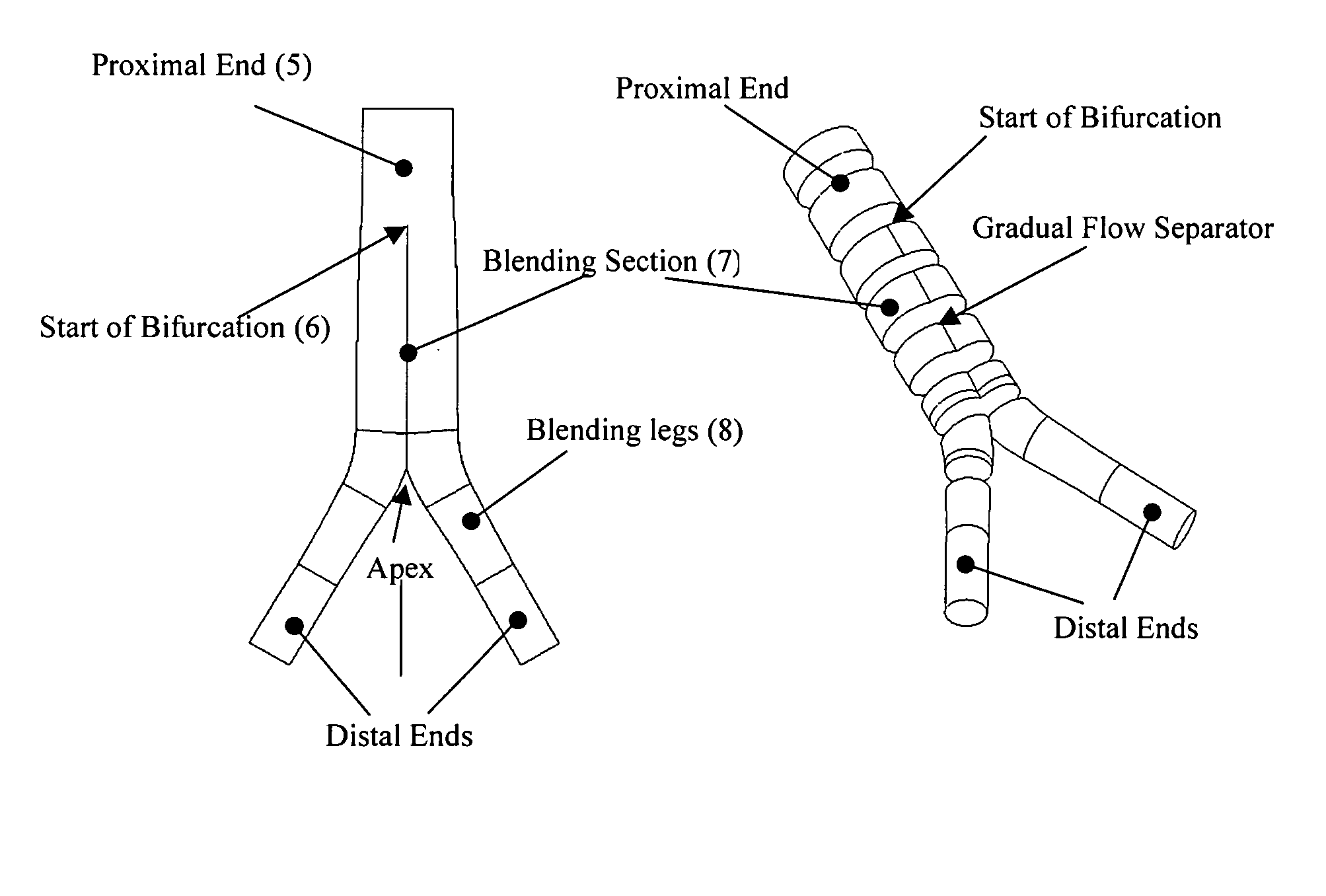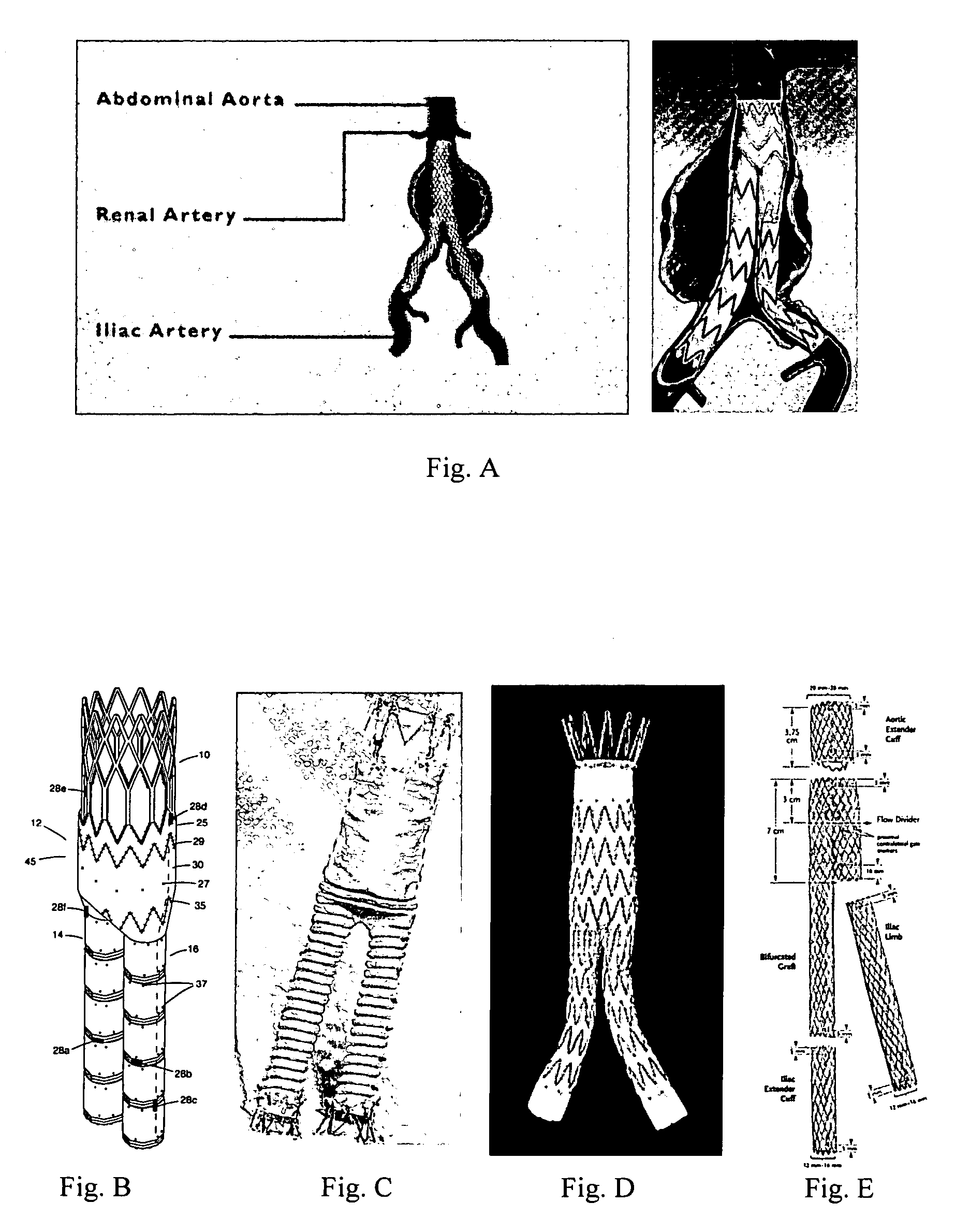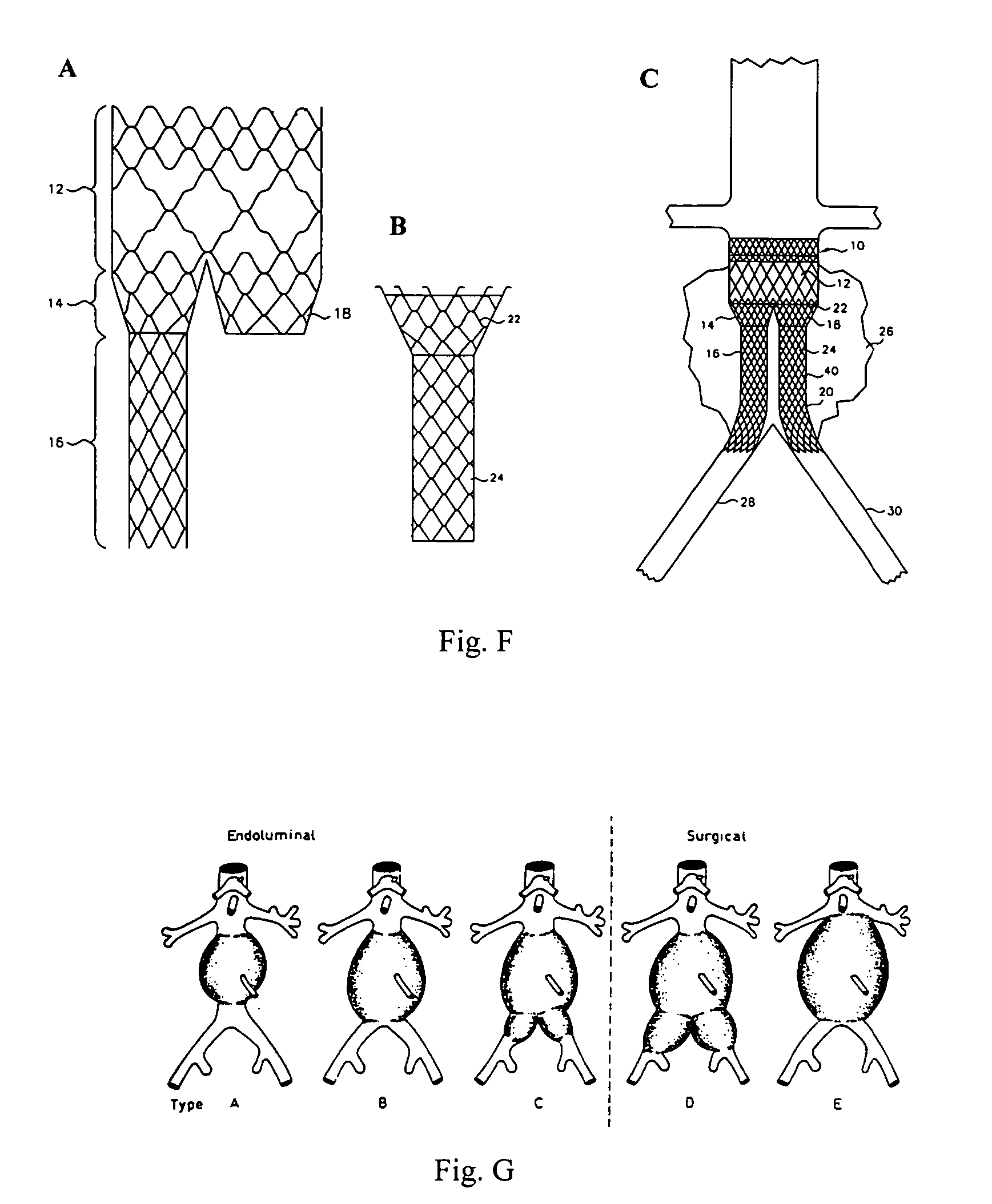Vascular graft
a technology of vascular grafts and endovascular arteries, which is applied in the field of vascular and endovascular grafts, can solve the problems of affecting circulation, affecting circulation, and causing internal bleeding and eventual death in many cases, and affecting circulation
- Summary
- Abstract
- Description
- Claims
- Application Information
AI Technical Summary
Benefits of technology
Problems solved by technology
Method used
Image
Examples
Embodiment Construction
[0100] Referring to FIG. 1 a vascular graft 1 according to the invention is shown in diagrammatic form, and it comprises: [0101] a proximal section 2; [0102] iliac distal legs 3 and 4; and [0103] a bifurcation blending section 5 between the proximal section 2 and the distal legs 3, 4.
[0104] The characteristics of the graft 1 are such that the cross-sectional area of the proximal section (Area 1) at the bifurcation point is less than or equal to the sum of the two cross sectional areas of both iliac legs 3, 4 (Area 2 and Area 3), i.e. Area1≦Area 2+Area 3. The area ratio of (Area2+Area 3) / Area1 should be as close to unity or greater as possible. This gives a total transmission of forward incident pressure wave (PI) with no reflection at the junction. The blending section 5 minimizes wave reflections (PR). This is very different from prior grafts which incorporate a shape at the bifurcation, which introduces a sudden cross sectional area change, at the bifurcation point from the proxi...
PUM
 Login to View More
Login to View More Abstract
Description
Claims
Application Information
 Login to View More
Login to View More - R&D
- Intellectual Property
- Life Sciences
- Materials
- Tech Scout
- Unparalleled Data Quality
- Higher Quality Content
- 60% Fewer Hallucinations
Browse by: Latest US Patents, China's latest patents, Technical Efficacy Thesaurus, Application Domain, Technology Topic, Popular Technical Reports.
© 2025 PatSnap. All rights reserved.Legal|Privacy policy|Modern Slavery Act Transparency Statement|Sitemap|About US| Contact US: help@patsnap.com



